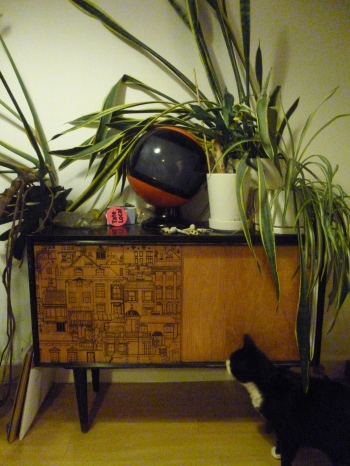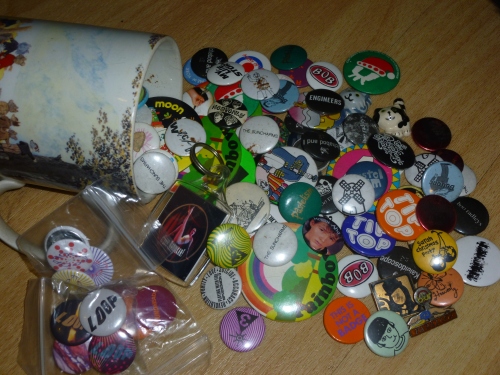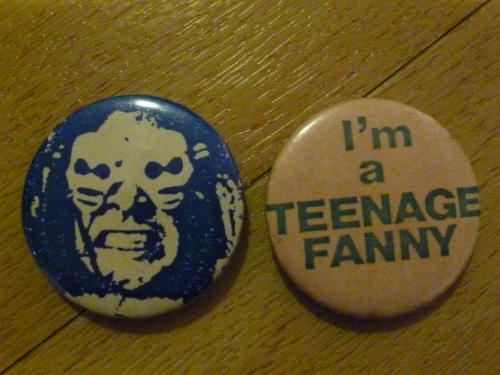The combination of cheap Eurostar tickets and an overwhelming sense of impending doom prompted me to take another quick jolly to Brussels for a couple of exhibitions and a roam about the city before we all go to hell.
Among other things, this visit took me back to the Art & Design Atomium Museum – ADAM. The last time I was there it was for some D.I.S.C.O (an enormously enjoyable exhibition), this time it’s for ‘disco’s demolition’, punk.
Punk Graphics looks at the visual of the punk and post-punk music scenes, concentrating on the design elements and graphics of the ‘art on paper’ and ephemera. A lot of this is the stuff that isn’t necessarily meant to survive – posters, flyers, tickets, fanzines – but which produced the visual language for the major sub-cultures of the period (in the UK and the US anyway).
Many of the pieces on display were created for a one-off occasion; some are pretty off the cuff and, possibly, with no thought to their continued existence even tomorrow, let alone forty years later.
The exhibits are drawn predominantly from the personal collection of Andrew Krivine, and display the key design techniques used by UK ad US producers for this type of material;
Cut ‘n’ paste collage
The ‘appropriated’ image
The comic book look
DIY
Type-face
Many of the items in the exhibition cannot be assigned to a specific designer; ‘Designer unknown’ is all we get. In some cases this was because the item; poster or record sleeve, was designed by a staffer at the record company or music venue. In other cases it’s probably because the item, mostly fanzines in this case, was created by a fan and sold, informally, at the gigs and clubs.
You’ll notice that many of the more ‘informal’ items involve black print on white or coloured paper. The restricted use of coloured ink reduced the cost of production and, let’s be honest, some, at least, of the pieces may have been printed on the sly using the printer or photocopier at work. This was, undoubtedly the case for a lot of later, indie, flyers and fanzines.
We also see the webs of influence, comics and the horror genre influencing the punk aesthetic, which in turn influenced fashion and wider popular culture.
There’s a small selection of punk, and punk-influenced clothing on display.
The Katharine Hamnett, ‘Ban Pollution’ t-shirt highlights punk’s involvement in the political campaigns of the day. On display are some examples of left-wing punk’s push-back against the 1970s populism of the extreme far right. At a time when the National Front marched openly through the streets and promoted hostility towards anyone, or anything, perceived as ‘different’, many punks joined forces with other left-wing and anti-fascist groups to work and fight against them.
Andrew Krivine’s collection also seems to include a flip load of badges. This was just one smallish wall but scouring the badges for best designs took up, probably, more time than it should have.
Considering the, sometimes, chaotic appearance of the designs and the, sometimes, chaotic nature of the scene, the exhibition is very clean-lined. This contrast can make it a little difficult to really get into the punk mindset. The pieces on display do seem rather removed from their original context. I suppose that this is inevitable when the physical remains of a scene that evolved so rapidly and organically are selected for display in a wholly different, far more tidy and controlled, environment.
Still, caveats aside, I enjoyed the exhibition. I like to see ephemera and know myself the surprise, and joy, of finding some random flyer, photo or ticket for a gig that happened ages ago, and the memories that it brings back (if I can even remember it. I used to drink quite a lot of cider).
The exhibition ‘Punk Graphics’ is on at Art & Design Atomium Museum (the Brussels Design Museum) until 26th April 2020. http://adamuseum.be/en/punk-graphics/










































